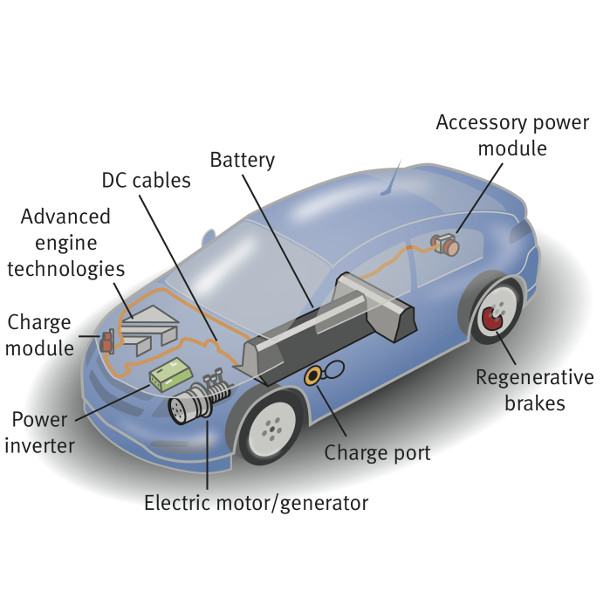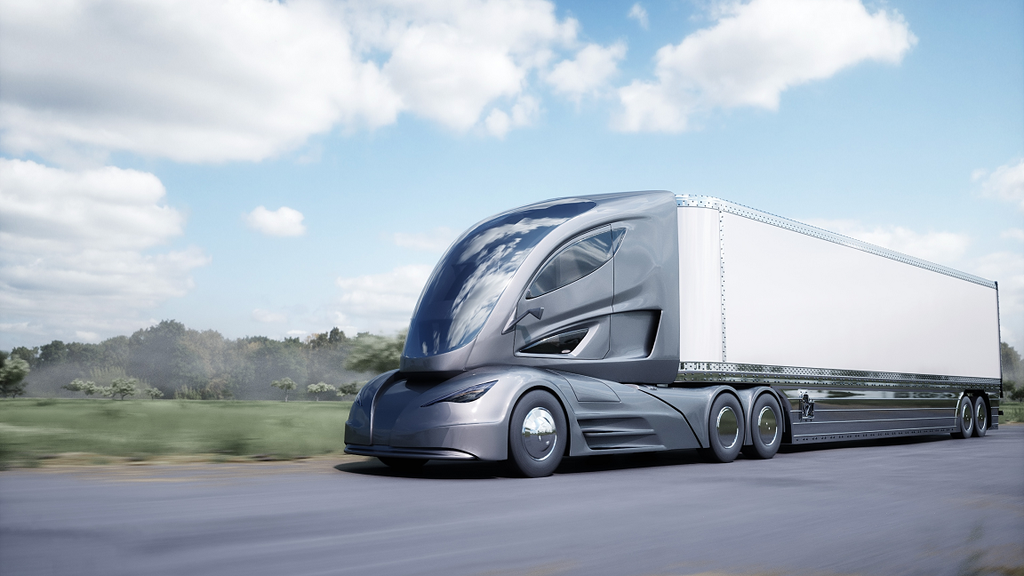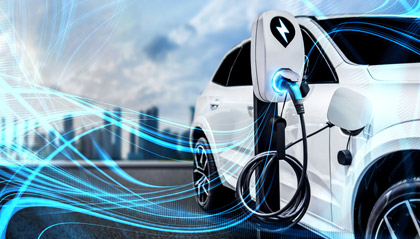As we head into an era of electric mobility, traditional automakers are grappling with the reality of their gasoline-guzzling past while racing to define their high-voltage future. The shift is as electrifying as it is turbulent, acting as the industry’s greatest overhaul in more than a century. This article seeks to cut through the industry noise and take an in-depth look at how traditional automakers are taking on the challenges and opportunities associated with the transition from internal combustion engines to electric propulsion. Buckle up, it’s going to be a thrilling ride!
Understanding Electric Vehicle Technology

As traditional automakers grapple with the inevitable turn towards cleaner, more efficient vehicle options, understanding the nuances of electric vehicle technology becomes paramount.
At its core, the essence of any fully electric vehicle (EV) lies in its battery and underlying electrical system, which replaces the traditional traditional combustion engine. Instead of gasoline, these vehicles rely on stored electricity to power an electric motor and move the vehicle. This stored electricity comes from charging the vehicle’s battery pack from an external source.
The battery is without a doubt the heartbeat of an electric vehicle, typically being a lithium-ion unit similar to the batteries found in smartphones or laptops, but on a much larger scale. The performance, range, and lifespan of the EV primarily depends on the efficiency of this battery pack, which is why automakers across the globe are in a fierce competition to develop more efficient, cheaper, and lighter batteries.
Electric motors, which translate that battery power into motion, are simpler and more efficient than combustion engines. They also offer faster acceleration and require less maintenance. Most EVs also employ regenerative braking, a system that recovers some of the energy normally lost during braking and feeds it back into the battery.
Then there’s the electric vehicle’s transmission, which is markedly different from a traditional car’s. An EV doesn’t require a multi-speed gearbox as an internal combustion engine does. Electric engines deliver their torque — or turning force — seamlessly through the range of speeds, eliminating the need for shifting gears.
Charging infrastructure is another crucial component of the EV technology framework. Unlike gasoline refueling which is relatively quick and widely accessible, electric charging stations are still maturing in availability and in the speed of charging. However, home charging, supercharging stations, and battery swapping technologies are emerging as solutions to this issue.
So, what does this mean for a driver transitioning from a conventional gasoline vehicle to an EV? To start with, expect whisper-quiet rides as the usual engine noise is gone. Secondly, EV’s are inherently more responsive due to the instant torque delivery characteristic of electric motors–a smoother, more exhilarating driving experience might quickly convert even the most steadfast combustion engine enthusiasts.
Finally, let’s not forget the dashboard–the driver’s interface with all of this technology. Many EV features can be controlled from an in-car display or even remotely via a smartphone app: climate control, scheduled charging, and even pre-heating the battery for optimal performance can all be done with a few taps and swipes on a screen.
In short, the technology behind electric vehicles represents not just a paradigm shift in power mechanics, but also a leap towards smarter, more networked automobiles that offer a completely new kind of driving experience.
Key Challenges for Traditional Automakers

Caught amidst the shifting sands of the automotive industry, traditional automakers face an assembly-line of obstacles in their watershed transition to electric. This isn’t just about revamping an already intricate production system, it’s about tectonic shifts in mindset, re-conceptualizing from combustible engines to battery packs, a paradigm shift that may prove akin to swapping out horses for horsepowers back at the dawn of Automobilia.
The first hurdle, unruly as a Bronco with a supercharged V8, is inevitably the manufacturing infrastructure. The mosaic of factories, tooling, and supply chains designed for gasoline and diesel vehicles would require an astronomical sum to retrofit for electric vehicles (EVs). They may have decades of experience in making internal combustion engines whirr like a chorus of mechanical cicadas, but EV production is a different ballgame. Moving from internal combustion engines to electric drivetrains lands automakers in uncharted territory akin to swapping their chess pieces for a deck of poker cards.
Then there’s the marvel and mystery of the EV powertrain – the beating heart of e-mobility. There is no doubt that the technology is ingenious, but it’s also an entirely different beast to wrangle. Car manufacturers have spent over a century perfecting the art of the internal combustion engine, only to now confront the reality of mastering an entirely new and rapidly evolving technology or risk being left eating the dust of their competitors’ innovation.
Another monumental challenge stares them in the face: the question of battery sourcing and management. With many automakers dependent upon a matrix of third parties for this key component, concerns around battery life, charging infrastructure, and sourcing ethical, sustainable components often become an integral part of the switch.
Not to be dismissed easily, the roadblock of consumer perception can be as stubborn as an old rust bucket. Traditional car companies face the uphill task of selling electric dreams to a customer base that, for the most part, isn’t yet convinced. Can they squelch common misconceptions about electric vehicle range and performance? Can they sell the hum of an electric motor as a replacement for the guttural growl of a V8? Quite a gear shift, to say the least.
Lastly, with great power comes greater regulatory issues. Indeed, navigating a rapidly morphing regulatory landscape may feel as daunting as drifting a fully-loaded semi-truck. Governments worldwide swing between incentivizing purchases of electric vehicles and tightening emission norms, leaving automakers to decode the best route amidst this legislative labyrinth.
In sum, for traditional automakers, the electric revolution is a marathon, not a sprint. As they embark on this electrifying journey, the complexities they face are diverse, daunting, and truly revolutionary in nature. It’s clear that simply trading in the rumble for a whirr necessitates a ginormous metamorphosis. But as with every great pursuit, the rewards – both for the companies and for the planet – promise to be worth the efforts.
Case Studies of Automakers Transitioning to Electric Vehicles

There’s no denying the transformational shift happening within the auto industry as traditional automakers embrace the electrification trend. Several prominent players in the field are progressively shifting their focus towards producing electric vehicles (EVs), stemming from a variety of motivations. Let’s delve deeper and peruse some of the prominent instances.
First on our list is General Motors (GM), an American auto behemoth famed for its gas-guzzling trucks and SUVs, that has striven to refigure its image with a monumental pledge. GM declared its ambitious goal to produce exclusively zero-emission vehicles by 2035. According to its strategic imperatives, GM anticipates to introduce around 30 all-electric models worldwide by 2025, significantly transforming its gas-powered portfolio. There’s large-scale capital investment, to the tune of $27 billion, planned in electric and autonomous vehicles over the coming years.
Daimler AG, the German automaker that owns the Mercedes-Benz brand, astonishes with its “Electric First” strategy. The company is rewriting its future by embracing electric vehicles, underscoring its commitment to be ready for an all-electric world. It plans to launch six new electric models, positioning Mercedes-Benz to become a leader in electrified car and service segments. Daimler AG also unveils a new holistic platform strategy with dedicated architectures purely for electric drive, providing the foundation for a broad, globally attractive model portfolio.
Not to be left behind, Ford Motor Company, another giant from America, has announced an increased investment in electric vehicles, escalating to $22 billion through 2025. For Ford, the Mach-E, an all-electric mustang inspired SUV, is the torchbearer of its new direction. Recently, Ford unveiled its all-electric Ford F-150 Lightning, America’s best-selling truck turned electric, marking a significant milestone in the electrification journey.
Lastly, Volvo, the Swedish automaker famous for its steadfast commitment to safety, is pioneering its own electric Renaissance. The Scandinavian manufacturer has proclaimed that every Volvo car launched from 2019 forward would have an electric motor, aiming for 50% of all sales to be fully electric by 2025. The company’s call ‘to go fully electric’ is echoed in its daringly futuristic plans, including a complete end to internal combustion engine cars in its lineup.
Unquestionably, the decision by these automakers, and many others, to transition towards electric vehicles signifies not just a strategic shift in production, but a truly momentous evolution within the industry itself. Despite the daunting challenges in their path, there’s a clear recognition that the future of mobility is predominantly electric. Their moves are increasingly signaling that the days of the internal combustion engine, once the bedrock of the auto industry, are numbered.
Future Plans of Traditional Automakers
As traditional automakers navigate the shift towards electric vehicles (EVs), they are rolling out ambitious plans that reflect a renewed commitment to environmental sustainability and technological innovation. This transition is a profound business transformation that incorporates new models of mobility and strategy redirection.
Leading the charge is General Motors, which recently announced an enormous investment of $27 billion through 2025, aimed at launching 30 different EV models globally. The goal? To surpass Tesla and become the US market leader in electric vehicles with approximately 1 million sales per year by 2025. Likewise, Ford is investing $22 billion in their electrification efforts, with a plan that includes the production of a fully electric version of its popular F-150 truck. These commitments underscore that EVs are not simply a peripheral consideration, but centrality to these automakers’ future strategies.
German automaker Volkswagen is also demonstrating a strong commitment to electric mobility, with plans to launch up to 70 all-electic models by 2030. This move is expected to make up more than half of their car sales across Europe and the US. Another German heavyweight, Mercedes-Benz, plans to roll out six new electric models within a span of two years, indicating that the shift towards EVs is gaining substantial traction among luxury automakers.
Asian automakers are not left behind. Toyota, a hybrid pioneer, is aiming to sell 5.5 million electrified vehicles by 2025, including fully electric and hydrogen fuel cell cars. Hyundai too has jumped on the EV bandwagon with plans for 23 new electric models by 2025.
What binds these automakers is a shared understanding of the high stakes at play. As the world grapples with climate change and governments increase pressure for automakers to curb emissions, the switch to electric cars is no longer an option but a necessity. Yet, the scale and breadth of these companies’ EV plans shows it’s not just about compliance. There’s a genuine excitement about the opportunities that this shift could bring. From pioneering new technologies to reinventing customer experiences, this could be the industry’s most significant evolution in centuries.
Of course, it’s one thing to announce plans and another to achieve them. These companies face daunting challenges: from developing advanced battery technologies to building out charging infrastructure. But if they can negotiate these hurdles, they have a chance to not simply survive this transition, but thrive, reshaping the automotive landscape in the process.
Indeed, these are exciting days— a future once imagined is not only becoming a reality, but forming right before our eyes. Buckle up, the ride to electric is just getting started.
FAQs
Is Transitioning To Electric Worth It For Traditional Automakers?
How Challenging Is The Transition To Electric For Traditional Carmakers?
What Do Traditional Automakers Stand To Lose?
Conclusion
Admittedly, traditional automakers are taking a beat-to-beat approach rather than a massive leap when transitioning to electric. But, their progressive efforts indicate an encouraging commitment to a greener, sustainable future. One has to appreciate their efforts of integrating new into old, ensuring familiarity isn’t lost. Gothenburg’s quiet streets signal a shift in the orchestra of internal combustion, with the first notes of the electric era already audible. It’s not a revolution, rather, a subtle, perceptible evolution: the automotive world, quietly charging forward.
